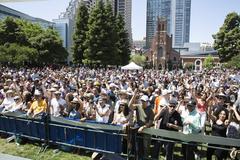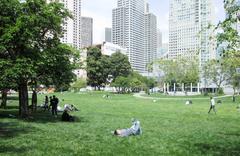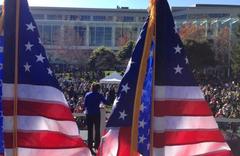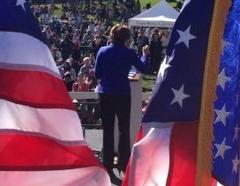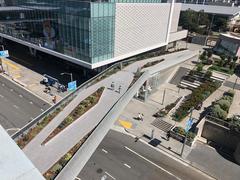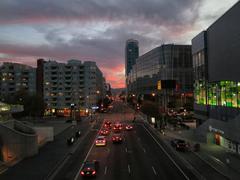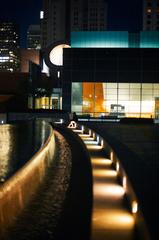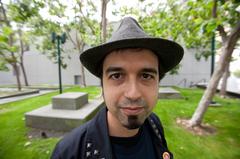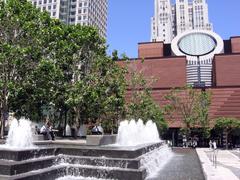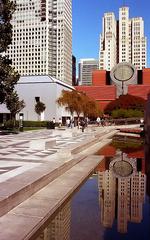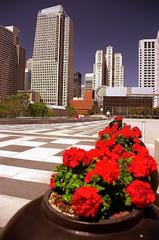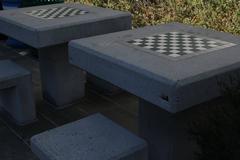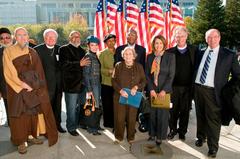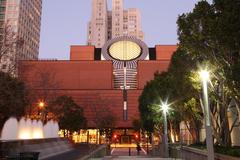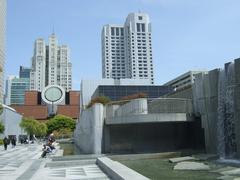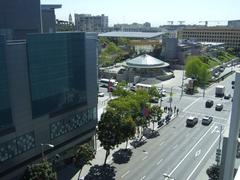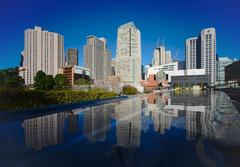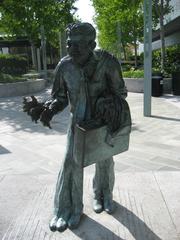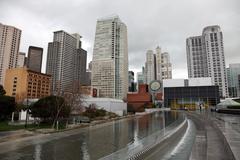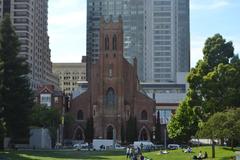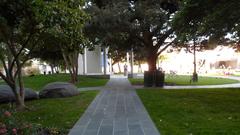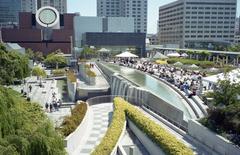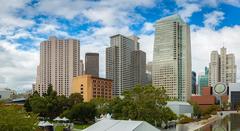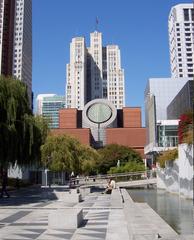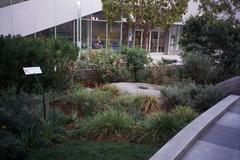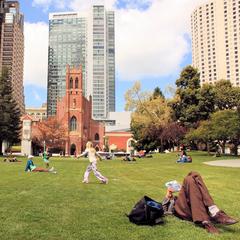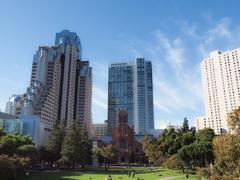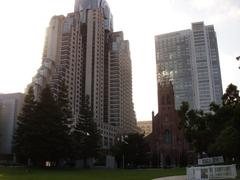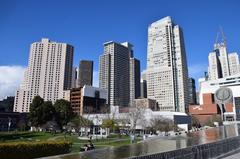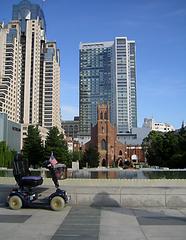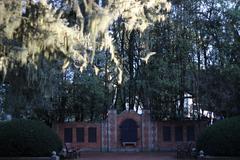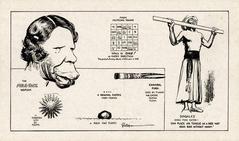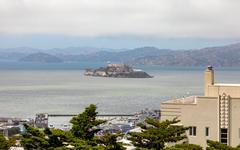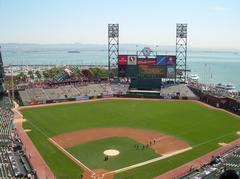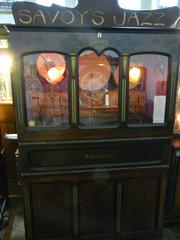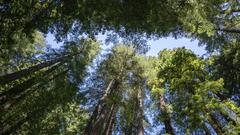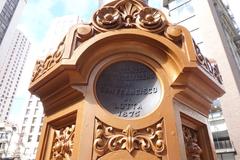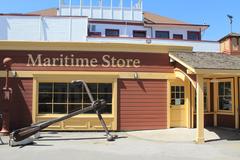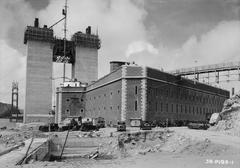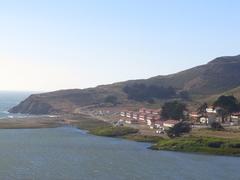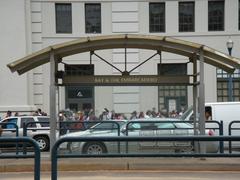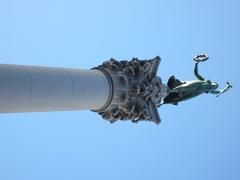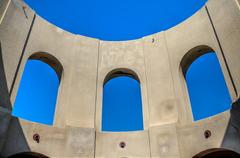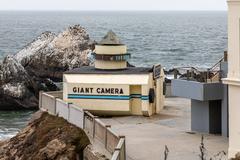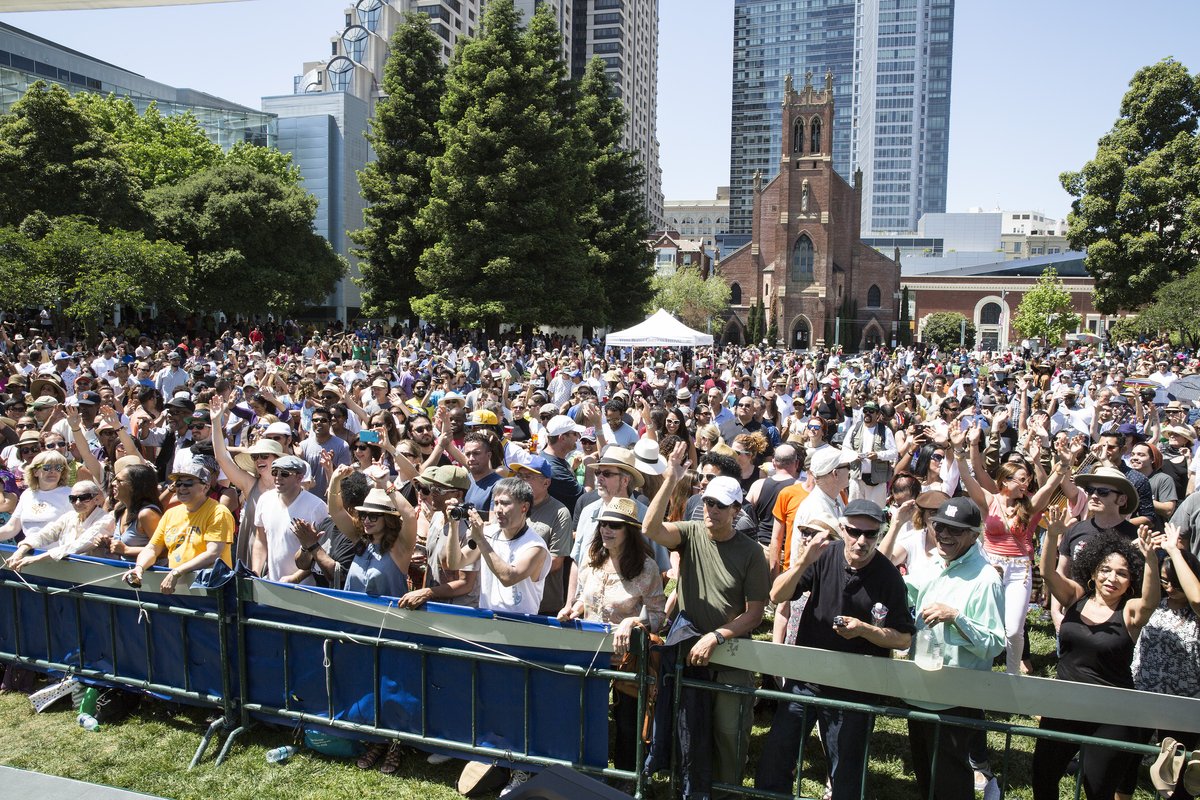
Yerba Buena Gardens in San Francisco: A Complete Visitor’s Guide
Date: 18/07/2024
Introduction
Nestled in the heart of San Francisco, Yerba Buena Gardens offers visitors a lush escape into nature, culture, and history. The Gardens are more than just a scenic spot; they are a testament to the city’s ability to reinvent itself while honoring its rich past. The name ‘Yerba Buena’ itself is steeped in history, harking back to the aromatic herb discovered by Spanish explorers in the 18th century (National Park Service).
The Gardens’ story begins in 1776, when the area was first claimed by the Spanish and later transitioned into a Mexican rancho in the early 1800s. With the onset of the Gold Rush in 1849, the area became a chaotic landing point for fortune seekers, marking the beginning of its urban transformation. By the late 19th century, Yerba Buena Gardens had evolved into a bustling urban space, hosting residential buildings, commercial enterprises, and even a baseball park.
The 20th century saw a shift towards industrial use and eventual decline, but a bold vision in the 1970s and 1980s aimed to reclaim the area as a vibrant cultural and public space. The first phase of Yerba Buena Gardens opened to the public in 1993, incorporating elements of history, art, and nature into its design. Today, it stands as a dynamic cultural hub, home to world-class museums, public art installations, performance venues, and memorials, reflecting the diverse character of San Francisco (Yerba Buena Gardens).
Table of Contents
- A Rich History - From Spanish Settlement to Cultural Hub
- Cultural Significance - A Tapestry of Art, History, and Community
- Visitor Information - Visiting Hours, Tickets, and Accessibility
- Nearby Attractions
- Travel Tips
A Rich History - From Spanish Settlement to Cultural Hub
Yerba Buena Gardens’ story is deeply intertwined with San Francisco’s own transformation from a humble Spanish settlement to a bustling metropolis. The very name ‘Yerba Buena’ harkens back to the aromatic herb that once blanketed these hillsides, discovered by Spanish explorers in the 18th century.
Early Days - A Spanish Overlook and Mexican Rancho
- 1776 - The area now known as Yerba Buena Gardens was first claimed by the Spanish, establishing Mission Dolores and the Presidio military outpost. Overlooking the cove, this land offered strategic views and access to the bay (National Park Service).
- Early 1800s - Under Mexican rule, the land transitioned into a rancho, a large land grant typical of the era. This period saw a mix of agricultural use and continued importance as a vantage point over the growing port.
Gold Rush and Urban Development - A City’s Heartbeat
- 1849 - The Gold Rush dramatically reshaped San Francisco, and Yerba Buena Cove became a chaotic landing point for fortune seekers. The Gardens’ location placed it at the heart of this rapid urbanization.
- Late 19th Century - As the city expanded, the area transitioned from its Gold Rush frenzy into a more defined urban space. It housed a variety of uses, including residential buildings, commercial enterprises, and even a baseball park.
20th Century - From Industrial Use to Redevelopment
- Early 1900s - The construction of the Ferry Building and subsequent development along the Embarcadero shifted the city’s focus towards shipping and industry. Yerba Buena Gardens found itself surrounded by warehouses and transportation infrastructure.
- 1939 - The Golden Gate International Exposition on nearby Treasure Island brought renewed attention to the waterfront. While not part of the exposition itself, the area benefited from the city’s beautification efforts.
- Post-WWII - Like many American cities, San Francisco experienced a decline in its urban core as industry shifted and suburbs grew. Yerba Buena Gardens, once a bustling center, fell into disrepair.
- 1960s - The construction of the elevated Embarcadero Freeway further separated the area from the waterfront, contributing to its decline. However, this period also saw the rise of urban renewal movements across the country.
A Garden is Born - Vision and Transformation
- 1970s-1980s - A bold vision emerged to reclaim Yerba Buena Gardens as a vibrant cultural and public space. This ambitious project involved demolishing the aging freeway, reclaiming land from industrial use, and creating a multi-block park.
- 1993 - The first phase of Yerba Buena Gardens opened to the public, marking a significant milestone in San Francisco’s urban revitalization. The park’s design incorporated elements of history, art, and nature, reflecting the city’s diverse character.
Cultural Significance - A Tapestry of Art, History, and Community
Today, Yerba Buena Gardens stands as a testament to San Francisco’s ability to reinvent itself while honoring its past. More than just a green space, it’s a dynamic cultural hub that reflects the city’s values and aspirations.
A Celebration of the Arts
- World-Class Museums - The Gardens are home to renowned institutions like the SFMOMA, the Yerba Buena Center for the Arts, and the Contemporary Jewish Museum, showcasing cutting-edge contemporary art, performance, and cultural exhibitions (SFMOMA, YBCA, The CJM).
- Public Art Installations - Throughout the Gardens, visitors encounter thought-provoking sculptures, murals, and installations by renowned artists, adding layers of meaning and visual interest to the landscape.
- Performance Venues - From the intimate Yerba Buena Gardens Festival stage to the state-of-the-art Louise M. Davies Symphony Hall, the area hosts a diverse range of musical and theatrical performances throughout the year.
A Place for Reflection and Remembrance
- Martin Luther King, Jr. Memorial - A powerful and moving tribute to the civil rights leader, this memorial features a waterfall cascading over excerpts from King’s speeches, inviting contemplation and reflection (MLK Memorial).
- Memorials and Gardens - Other spaces within the Gardens commemorate significant events and individuals, including the Ohlone people, who were the original inhabitants of the area, and victims of the AIDS epidemic.
A Community Gathering Place
- Green Spaces and Gardens - Lush lawns, vibrant flower beds, and tranquil fountains provide a welcome respite from the urban bustle, offering spaces for relaxation, picnics, and outdoor activities.
- Events and Festivals - Throughout the year, Yerba Buena Gardens hosts a variety of events and festivals, from farmers’ markets and outdoor movie nights to cultural celebrations and live music performances, fostering a sense of community and shared experience.
Visitor Information - Visiting Hours, Tickets, and Accessibility
- Visiting Hours - Yerba Buena Gardens is open daily from 6 AM to 10 PM. Specific attractions within the Gardens may have different hours, so it is advisable to check ahead.
- Tickets - Admission to the Gardens is free. However, some events and exhibitions at the associated museums and performance venues may have ticketed entry. Prices vary and can be found on their respective websites.
- Accessibility - The Gardens are fully accessible with paved paths, ramps, and elevators. Wheelchair rentals are available on-site. For more detailed accessibility information, visitors can refer to the official Yerba Buena Gardens website.
Nearby Attractions
- San Francisco Museum of Modern Art (SFMOMA) - Located adjacent to the Gardens, SFMOMA offers an extensive collection of contemporary art (SFMOMA).
- Metreon - A shopping and entertainment complex featuring restaurants, a movie theater, and various retail stores (Metreon).
- Children’s Creativity Museum - An interactive museum focused on fostering creativity in children through hands-on exhibits and workshops (Children’s Creativity Museum).
Travel Tips
- Public Transportation - Yerba Buena Gardens is easily accessible via BART and Muni. The Powell Street station is a short walk away.
- Parking - Several parking garages are available nearby, but public transportation is recommended due to limited parking (SFMTA).
- Best Time to Visit - Spring and fall offer the most pleasant weather. Weekdays are less crowded, providing a more serene experience.
- Photography Spots - The Martin Luther King, Jr. Memorial and the rooftop garden at the Contemporary Jewish Museum offer excellent photo opportunities.
Conclusion
Yerba Buena Gardens is a living testament to San Francisco’s resilience and creativity. From its early days as a Spanish overlook and Mexican rancho to its transformation into an urban oasis, the Gardens have continually evolved to meet the needs of the community. Today, they serve as a vibrant cultural hub that honors the past while embracing the future. With world-class museums like the SFMOMA, thought-provoking public art installations, and serene green spaces, Yerba Buena Gardens offers something for everyone. Whether you’re a history buff, art enthusiast, or just looking for a peaceful retreat in the city, a visit to Yerba Buena Gardens is a must. For the latest updates on events and activities, follow Yerba Buena Gardens on social media or visit their official website.
References
- National Park Service, 2024, National Park Service
- Yerba Buena Gardens, 2024, Yerba Buena Gardens
- San Francisco Museum of Modern Art, 2024, SFMOMA
- The Contemporary Jewish Museum, 2024, The CJM
- Children’s Creativity Museum, 2024, Children’s Creativity Museum
- Museum of the African Diaspora, 2024, MoAD
- San Francisco Recreation and Park, 2024, MLK Memorial
- Metreon, 2024, Metreon
- Yerba Buena Ice Skating and Bowling Center, 2024, Ice Skating and Bowling
- San Francisco Public Library, 2024, SFPL
- San Francisco Municipal Transportation Agency, 2024, SFMTA
- San Francisco Chronicle, 2024, San Francisco Chronicle
